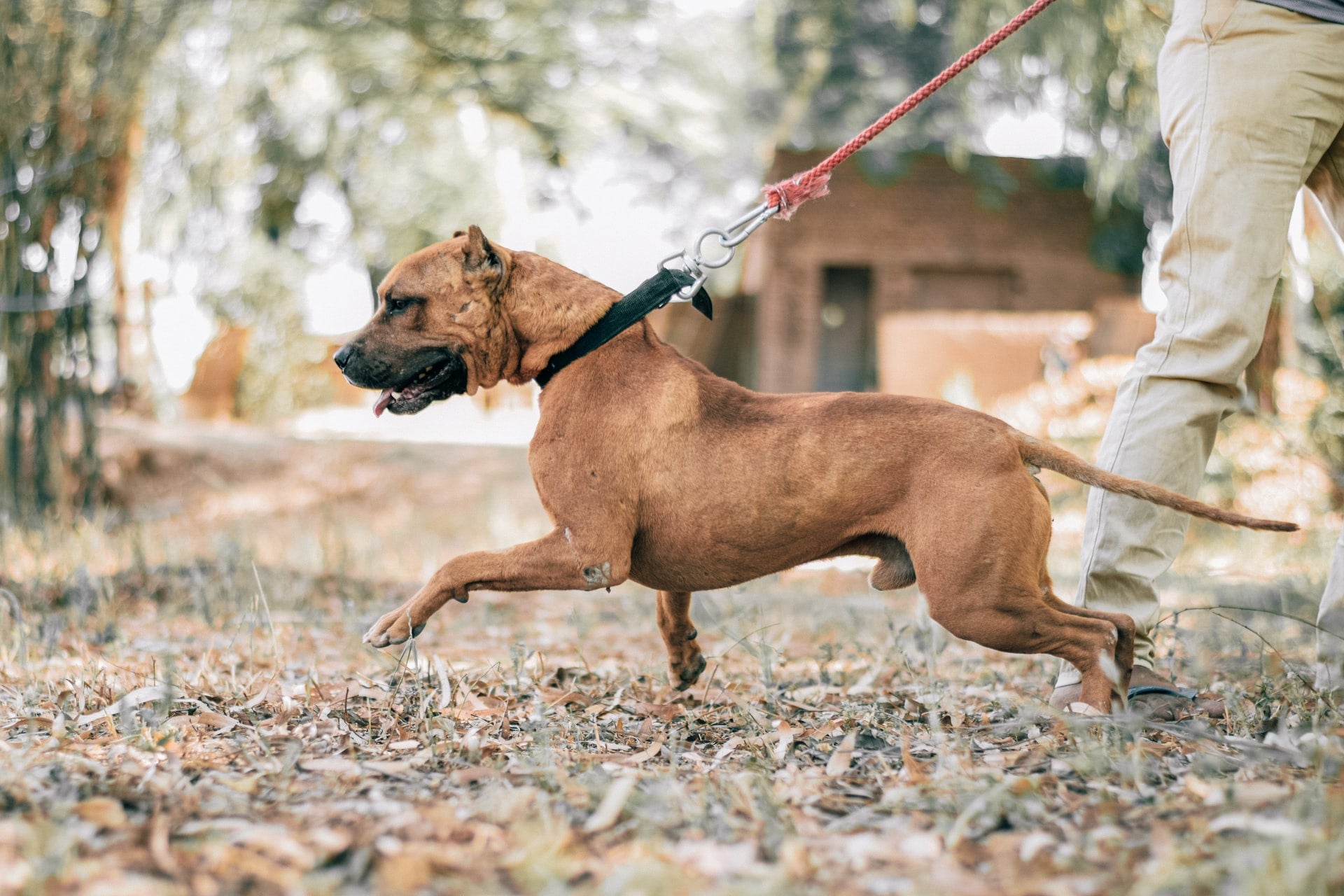Walks are an important part of your dog’s daily routine. Not only are they a good form of exercise, but they’re also a great way to satisfy your dog’s need to socialize and explore.
Understandably, those daily walks are an exciting part of your doggo’s day! Sometimes, though, our pups can get a bit too excited… and it can feel like our dog is walking us, rather than the other way around.
Does your furry friend pull on his leash while you’re out together? Read on for some expert tips for reversing that bad behavior.
Why Do Dogs Pull on Their Leash?
As you would likely assume, one common reason for dog leash pulling is simple: your dog is excited! He has places he wants to go and scents he wants to sniff, and pulling on the leash is his way of trying to get there faster.
That’s not the only reason, though. All dogs have an instinctive prey drive; there’s a good chance your pooch is eager to hunt and chase after “prey”—from bikes and cars to other animals and even people.
Is your response to your dog’s leash pulling to pull back? We hate to be the bearers of bad news, but by doing this you may be inadvertently encouraging his leash pulling behavior. When your dog feels resistance on the leash and collar, he’ll instinctively pull even harder.
Why is Leash Pulling a Problem?
Leash pulling isn’t just annoying—it can be dangerous for both you and your dog.
If you have a large, heavy dog, for example, you don’t want to lose control of him when he goes chasing after a car or animal.
You also want to make sure other people and animals feel comfortable around your dog, and demonstrating that you have full control is a good place to start.
Regardless of your dog’s strength, leash pulling can also be harmful to his neck (especially if he wears a collar instead of a harness). In addition to choking and strangulation, the pressure on the neck could also lead to ear and eye issues.
Of course, it’s also a matter of principle. By allowing your dog to continue pulling on his leash, you’re setting the precedent that he’s in charge rather than you. Your dog should always know that you have authority, and loose leash walking is a great way to establish that. (Plus, what pooch doesn't enjoy walking right next to their best friend?)

5 Tips to Stop Your Dog from Leash Pulling
If pulling works in your dog’s favor, he’s going to continue doing it. In other words, it’s up to you as the pet owner to change your dog’s behavior.
Some of our favorite tips to stop dogs from leash pulling include:
Tip #1: Be mindful of your surroundings.
If your dog is prone to chasing after other objects or animals, it helps to pay extra attention to your surroundings. If you know your pup is going to get overly excited at the beginning of his walk, begin your route in a quiet area so he can get rid of some of that excess energy before he encounters squirrels, cars, and other dogs.
Tip #2: Switch to a front clip harness.
Also known as a no-pull harness, a harness that clips in the front is a preferred alternative to the traditional leash-and-collar combo. That way, if your dog does pull, the weight will be distributed evenly across his body instead of centralized on his neck.
Attaching the leash to the front of the harness is good for leash training since each tug from you will cause your pup to slightly turn toward you—reminding him who’s in charge.
Tip #3: Stand firm.
You may have heard the advice to “be a tree.” Basically, this means that you should stand still and steady when your dog pulls on his leash. Don’t pull back or follow him. Instead, refuse to move until he comes back to you.
This will teach him that pulling isn’t the way to get where he wants to go; if he pulls, the walk is put on pause until he decides to cooperate.
Tip #4: Redirect your dog’s attention.
Instead of focusing on the pulling, try redirecting your dog’s attention. Use basic commands to instruct your dog to come toward you or even do a simple trick, making sure to reward him accordingly.
This goes hand in hand with being mindful of your surroundings: if you notice something that might cause him to lunge ( such as a squirrel or a car), redirect Fido’s attention to you, a treat, or something else altogether—preferably before he notices the “prey.”
Tip #5: Reward good behavior.
As always, training your dog should be centered around positive reinforcement rather than punishment. Instead of spending your energy teaching him not to pull, focus on what he should do. Teach him that walking next to you with a loose leash is a rewarding experience with plenty of praise and treats!
Ultimately, consistency is key. After all, dogs are creatures of habit and love predictability. For example, if you only sometimes stand firm while Fido pulls, he’ll just keep testing the limits as he tries to figure out whether your actions are random.
Keep your dog feeling good on his daily walks with PetHonesty’s JointSupport+ Chews. These soft chews are vet-recommended to support your dog’s joints, mobility, and flexibility. (Plus, they come in a tasty hickory-smoked bacon flavor!)
Sources:
https://vcahospitals.com/know-your-pet/controlling-pulling-on-walks
https://www.puppyleaks.com/pulling-on-leash/
https://www.pawtracks.com/dogs/leash-pulling-training/
https://www.akc.org/expert-advice/training/teach-puppy-walk-leash/













